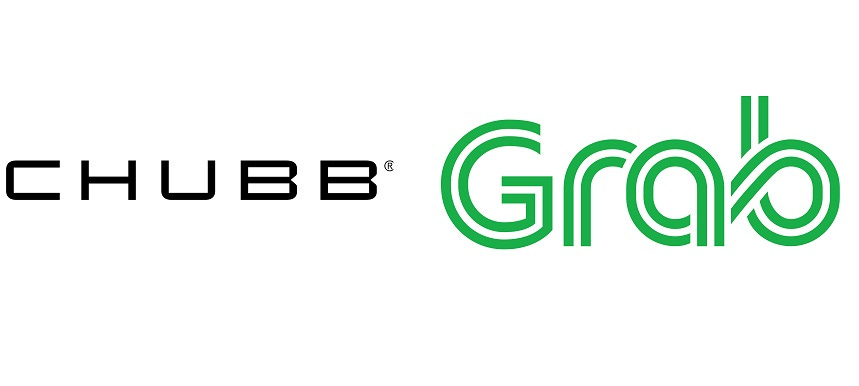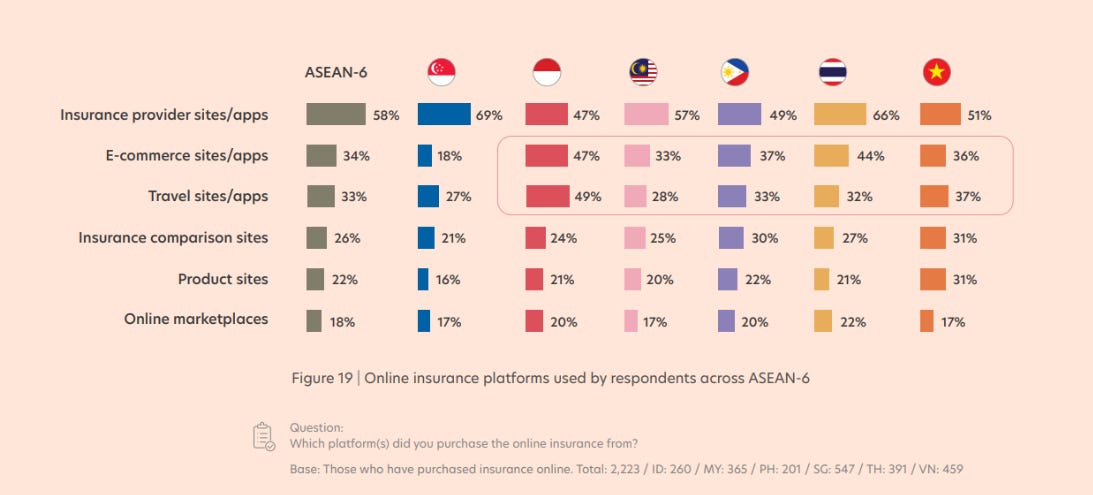Grab's Next Big Bet: Insurance
How Grab Plans to Insure Your Car, and Eventually, Everything Else
Grab may have begun as a ride-hailing app, but its eventual plan has always been to become the Super App of Southeast Asia.
Today, Grab’s digital ecosystem spans mobility, deliveries, payments, lending, and increasingly, insurance.
With the recent launch of Grab Motor Insurance in Singapore, Grab has signalled not just a product expansion, but a long-term play to rewire exactly how insurance is distributed, priced, and consumed across the region.
Here is my take on how Grab might approach the motor insurance market today, and how that could evolve into full-stack regional insurance dominance over the coming decade.
Background:
Grab made its first foray into the insurance business in a tie-up with Chubb in 2018, offering micro-insurance for Grab’s driver-partners and delivery riders, products like personal accident insurance and critical illness coverage embedded within the app.
It expanded into consumer insurance through travel insurance to its Singapore customers in 2020. It has since expanded its products to include personal accident coverage.
Grab also formed a joint venture with Chinese digital insurance ZhongAn in 2019, forming GrabInsure under its fintech arm GrabFin.
The Motor Insurance market in Singapore is estimated to be worth ~$1.5B (Gross Written Premiums) in 2025 with Income Insurance occupying the top spot with 25% market share. MS First Capital and AIG round up the top 3 with 10% and 9.3% market share respectively.
In 2024, gross motor insurance premiums in Singapore rose by 11% despite a mere 1% increase in vehicle population. This was largely due to inflation-linked price hikes and the growth of Electric Vehicles (which have higher production costs and are more expensive to insure).
In May 2025, Grab joined the General Insurance Association (GIA) after obtaining a general insurance license from the Monetary Authority of Singapore (MAS) in December 2024. The company has also begun hiring staff for a motor insurance team in recent months.
Why Grab Needs Insurance, and How It Would Benefit:
Grab’s core transactional businesses: ride hailing & food delivery, have high volume but structurally low margins due to competitive dynamics and cost structures. To drive long term profit growth, Grab needs to layer on high margin, recurring, defensible revenue streams on top of its platform.
Insurance fits this need perfectly:
Insurance is a High-Margin, Recurring Revenue Business
Grab’s core businesses operate on thin take rates and face intense competition.
Insurance offers recurring premium income, with industry leading net profit margins of 15-30% for well managed portfolios.
Once a user buys insurance, renewal rates are high and customer lifetime value increases dramatically.
Insurance margins can help Grab achieve long term group level margin expansion, which investors prize highly.
Insurance Deepens Ecosystem Lock In
Offering tailored, embedded insurance increases platform stickiness:
Drivers who buy insurance via Grab are less likely to switch to other platforms.
Merchants who rely on Grab for device or inventory protection stay more engaged.
Consumers can be incentivised with loyalty linked insurance rewards.
This mirrors the Meituan model in China, where financial services deepen ecosystem lock in.
Insurance has the potential to not just be a profit pool, but a retention lever across all of Grab’s verticals.
Insurance Monetises Grab’s Proprietary Data
Grab has behavioural data that traditional insurers lack:
Driving patterns, earnings stability, merchant sales, platform engagement.
This enables better underwriting and lower loss ratios.
Grab can also offer usage based and micro insurance products that are uniquely enabled by its data and app experience.
Data driven underwriting gives Grab a sustainable advantage in insurance margins and product differentiation.
Insurance Can Unlock a Huge Addressable Market
Southeast Asia is vastly underinsured:
Life insurance penetration <5 percent in many markets.
Health insurance coverage is low and inconsistent.
Motor and property insurance are often outdated and manually managed.
Grab has reach, trust, and distribution scale that position it to democratise insurance access across the region.
Insurance is one of the few adjacent verticals where Grab can add tens of billions of dollars in addressable market without massive operational complexity.
In the following paragraphs, I discuss:
My 4-step plan on how Grab can tackle the insurance industry
How Grab can establish itself as a leading underwriter and eventually position itself as the leading embedded insurance platform in SEA
Risks and Challenges that Grab will ultimately face as it looks to move from a distributor to an underwriting-led platform.
Step 1: Leverage Platform-Integrated Distribution
Grab’s launch of motor insurance is a natural extension of its ecosystem. It begins where it has the most defensible distribution moat; its driver and delivery partners.
Low CAC, High Intent: Grab has over 500,000 active drivers and delivery partners across Southeast Asia. These users already rely on the platform for earnings, and many need motor insurance. Grab simply removes the friction by embedding it into the app flow.
Data-backed Risk Profiling: Grab owns granular behavioural data such as distance driven, time of day, and accident patterns which allows them to build more accurate underwriting models and potentially lower premiums for safe drivers.
Digital native experience: Instead of forms and agents, users can activate, manage, and renew their motor policies via the Grab app, improving user experience and customer stickiness.
Grab is building distribution scale and consumer trust in insurance, the critical first step before it can control the value chain.
Step 2: Expand Across Geography and Coverage Types
After achieving product market fit in Singapore, Grab will then be well positioned to scale motor insurance regionally, in countries like Indonesia, Malaysia, Thailand, Vietnam, and the Philippines where:
Motor insurance penetration is underdeveloped, claims processes are still largely paper based.
Grab already has high platform usage and embedded trust across Southeast Asia.
The number of vehicles in other SEA countries far outweigh Singapore
Singapore has ~1 million vehicles.
Indonesia, Malaysia and Thailand combined have over 60 million vehicles.
In parallel, Grab can begin bundling adjacent insurance products such as:
Personal Accident Insurance
Device and Mobility Insurance for Delivery Partners
Micro-Health Policies for Gig Workers
These are products that align closely with platform users’ needs and can be sold as value-added services or subscription tiers within Grab’s membership program.
This expands Grab’s insurance addressable market beyond drivers into merchants, gig workers, and consumers creating platform stickiness and multi product profitability.
Step 3: Move Upstream into Underwriting and AI-Based Pricing
To truly dominate insurance, Grab will have to transform from being a distributor, to becoming an underwriter with full control over product design, pricing and risk selection, control of claims experience, and the economics of policy.
With its vast datasets, Grab will likely be able to deploy AI-based dynamic pricing models that:
Adjust premiums based on real time behaviour
Reward consistently safe driving habits
Detect and flag fraudulent cases using network analysis
If Grab reaches this level of underwriting sophistication, it could drastically lower loss ratios, a game changer for emerging market insurance where fraud and adverse selection remain major challenges.
Owning the underwriting business enables higher margin capture, superior product innovation, and deep strategic defensibility.
Step 4: Insurance as a Platform
Once the first 3 steps are achieved, the aim should be to position Grab as the leading embedded insurance platform in Southeast Asia, expanding far beyond its own ecosystem.
Once Grab masters underwriting and claims handling, it can then offer its insurance infrastructure as a platform-as-a-service to third parties:
Partnering with e-commerce platforms to provide embedded device insurance
Power mobility insurance for external ride-hailing fleets, or EV leasing companies
Offer API-based small business insurance to FinTechs and Digital Banks
Embed health insurance offers into wellness and fitness ecosystems
Grab can also cross-sell SME and consumer insurance to the vast number of merchants on GrabMart, GrabFood, GrabPay and its various DigiBanks.
The aim for Grab should be to become a platform layer that powers insurance products across sectors, both within and outside the Grab ecosystem.
Insurance as a platform creates high margin recurring revenue with very low incremental customer acquisition cost, positioning Grab for significant long-term margin expansion and profit growth.
Risks and Challenges:
While the long term opportunity in insurance is compelling, Grab will face several meaningful risks and operational hurdles as it tries to move from distributor to underwriting led platform. These challenges should not be underestimated, and execution quality will be critical.
Regulatory Complexity and Fragmentation
Insurance is a highly regulated and locally governed industry, unlike mobility or payments which have more cross border scalability.
Each Southeast Asian country has its own insurance regulator, capital requirements, and consumer protection laws.
Grab will need to navigate multiple licensing regimes and possibly establish distinct legal entities or partnerships in each market.
Restrictions on foreign ownership of insurance businesses could slow down or complicate Grab’s ambitions in markets like Indonesia or Thailand.
Regulatory compliance will require significant time, capital, and internal expertise, limiting Grab’s ability to scale as rapidly as it did in mobility.
Capital and Risk Management Requirements
Underwriting insurance is not a pure software business. It requires:
Holding sufficient regulatory capital reserves to cover future claims.
Managing underwriting risk prudently to avoid large unexpected losses.
Building deep actuarial and claims handling capabilities, which Grab does not yet fully own.
If Grab takes on underwriting too aggressively without proper risk management infrastructure, it could expose itself to material financial losses and damage platform trust.
Claims Experience and Customer Trust
Insurance is fundamentally a trust based business. Consumers judge insurers not on app onboarding experience but on how well and how fairly claims are paid.
If Grab’s claims processes are slow, opaque, or perceived as unfair, it could damage consumer trust and hurt broader Grab brand equity.
Claims handling is also prone to fraud and abuse, which can increase loss ratios if not managed carefully.
Grab must invest heavily in fast, transparent, digitally native claims handling and fraud detection capabilities.
Poor claims experience is one of the fastest ways to destroy customer loyalty in insurance and limit product uptake. Grab cannot afford to get this wrong if it wants to scale in the space.
Competitive Landscape
Grab is not alone in seeing the insurance opportunity.
Traditional insurers are investing in direct to consumer digital channels and could fight back with better products or price wars.
Other platform players such as ShopeePay, GoTo Financial, or regional Super Apps may also expand into embedded insurance.
Chinese digital insurance models (like ZhongAn) may be exported into SEA with strong capital backing.
Grab must execute fast to build defensible scale before others crowd the space, or it risks being commoditised as a distribution layer rather than controlling the insurance stack. Speed and quality of execution will determine whether Grab can build true insurance leadership or simply become one of many digital distributors.
Conclusion: From Super App to Super Insurer
Grab’s move into insurance feels like the next logical step that builds on what Grab already does well.
I’ve followed and used Grab for years, and what stands out to me is their ability to integrate daily services into a cohesive digital ecosystem. Insurance fits naturally into that. It rewards platforms that own distribution, understand user behaviour, and have earned a degree of trust. Grab has all three.
I do not expect this to be easy. Building insurance at scale means dealing with regulation, capital requirements, and claims. It is a different kind of complexity from running food delivery or payments. But if Grab moves with discipline, and focuses first on where it has a real advantage (relationship with customers, usage data, direct channel), I believe it could create something meaningful.
This is not a short-term growth lever. Rather, it is a long-term layer that supports margins, retention, and product depth. If Grab gets it right, insurance will not define the company, but it could quietly become one of its most valuable and defensible businesses over time.
Thanks for reading!
Consider subscribing and giving it a like if you enjoyed the content!








